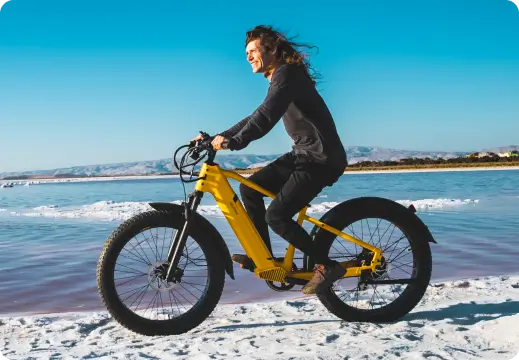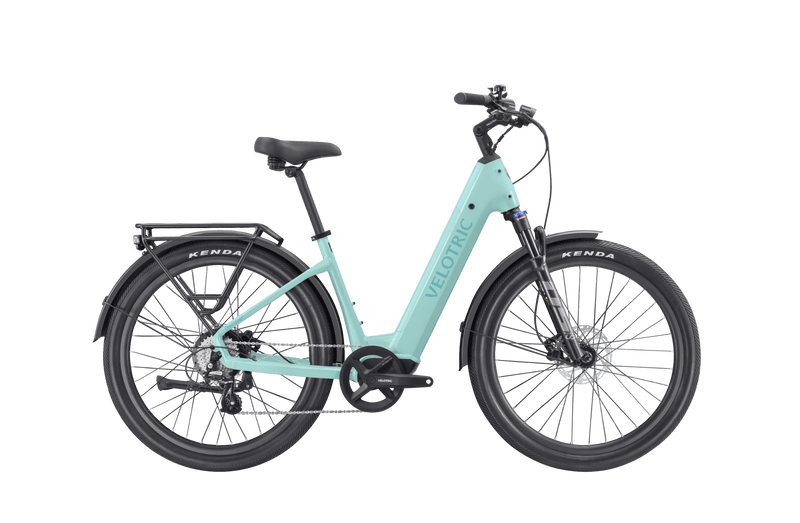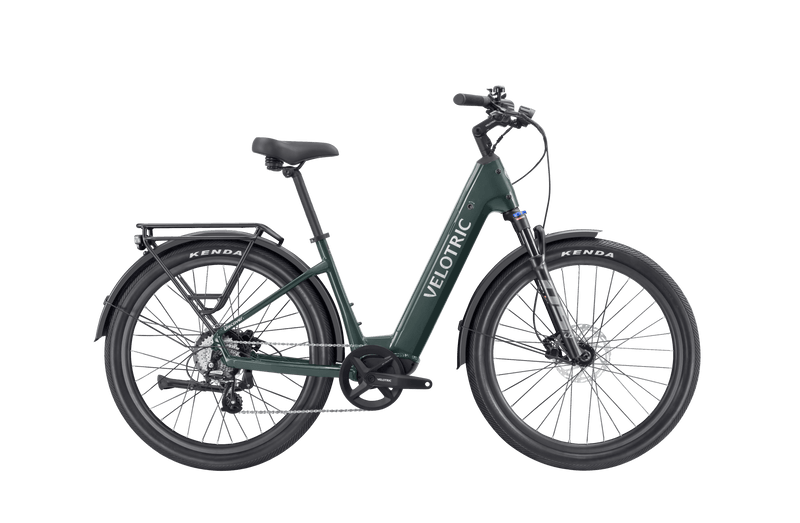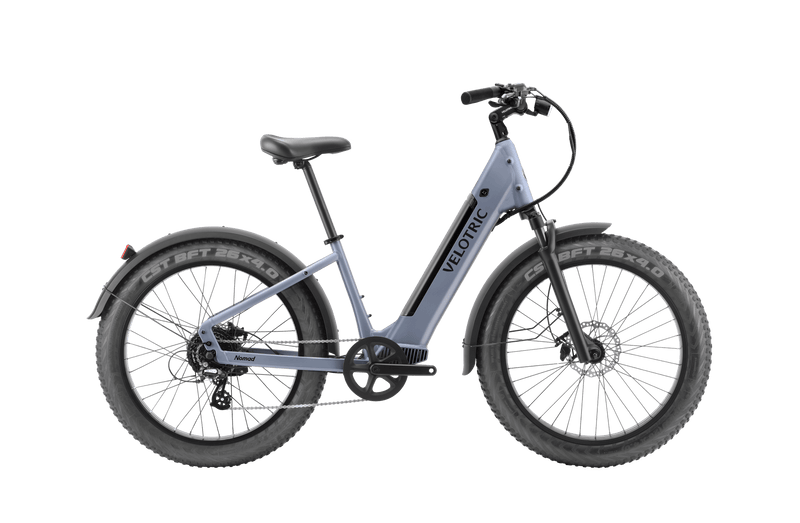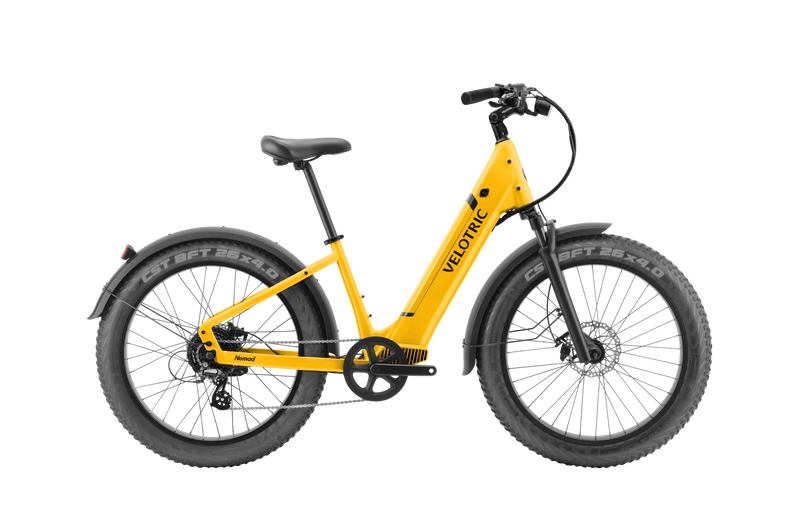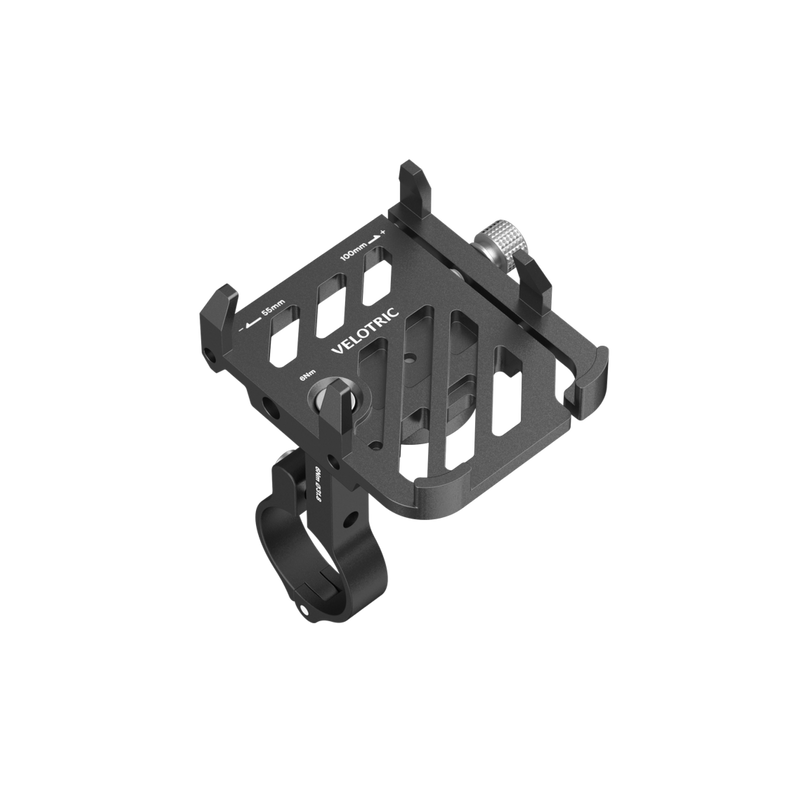Florida, the Sunshine State, is known for its temperate weather year-round. The balmy temperatures and sufficient sun make it a great place for e-biking. Florida also has many gorgeous outdoor spots to explore on an e-bike, like the Shark Valley Tram Road.
If you want to explore Florida’s natural beauty on two wheels, it’s important to acquaint yourself with the state’s electric bike laws. The below primer covers the must-know Florida statutes related to electric bicycles.
Key Florida e-bike laws explained
Like many states, Florida has regulations governing where you can ride e-bikes and under what conditions. Below, we give you a starter guide to Florida e-bike laws. This information is current as of January 2023, but it can change — so check local and state regulations before you ride!
Where are you allowed to ride e-bikes in Florida?
Florida allows electric bicycle riders to take their vehicles anywhere standard bikes are allowed. This includes roads and roadway shoulders (in the right lane), bike lanes, bike paths, and multiuse paths (like those allowing pedestrians and bikes).
Rules for trail riding depend on the type of trail. For example, the Florida Department of Environmental Protection permits Class 1 e-bikes in all areas where normal bicycles are permitted. However, some state parks restrict e-bike usage. Check with the state park before riding.
These are general state laws. Local laws may differ — more on that below.
How old do you have to be to ride an e-bike in Florida?
Florida has age restrictions for e-bike use similar to those for driving a car. You must be at least 16 years of age to use an e-bike legally.
What class of e-bikes are legal in Florida?
When discussing e-bike laws, it’s important to understand what an electric bicycle is. The definitions can vary. In general, there are three main classes of e-bikes.
Here’s how the classification system works:
- Class 1 e-bikes, or pedelecs, don’t exceed top speeds of 20 miles per hour (mph). This type of e-bike works if the cyclist is pedaling and lacks throttle assist (a mechanism that powers the bike forward even if you aren’t pedaling).
- Class 2 e-bikes don’t exceed speeds of 20 mph. However, they have throttle assist and can move forward even if you aren’t actively pedaling.
- Class 3 e-bikes are capable of reaching speeds up to 28 mph. They have a pedal assist system, which helps power the bike forward while you pedal, but no throttle assist. These bikes usually come with a speedometer.
Florida allows all classes of e-bikes, including Class 3 e-bikes — provided they don’t exceed speeds of 28 mph. The bike also can’t have an electric motor power with a wattage exceeding 750.
Do you need a helmet when riding an e-bike in Florida?
Florida law doesn’t require e-cyclists to wear helmets. However, it’s worth wearing one, even if the law doesn’t demand it. A helmet can keep you safe in bicycle accidents, minimizing the risk of a traumatic brain injury (TBI).
Discover the value of helmets and learn about helmet laws in different states.
Do you need a license to ride an e-bike in Florida?
Florida doesn’t require you to have a driver’s license to ride an e-bike. An e-bike also doesn’t have a registration requirement as a motor vehicle does. That means no trips to the DMV, saving you time and headaches.
Do you need insurance to ride an e-bike in Florida?
While you need insurance if you drive a car or motorcycle in the state of Florida, this is not required for e-bike riders. Again, this saves you time, stress, and money.
Local ordinances for e-bikes in Florida
The above guide touches on some of the broader e-bike laws in Florida, from licensing requirements to helmet regulations. However, municipality-specific ordinances may differ from statewide rules.
For example, e-bikes are banned in certain locations, such as Sanibel Island. There have also been discussions about banning e-bikes in Fort Myers Beach. Other areas, like Pinellas Beach communities, have banned e-bikes on the sand.
Additionally, state and local governmentordinances can change. That’s why we recommend looking up your area’s e-bike laws before you start cycling. Your local police station or DMV are good starting points.
What you should know before riding your e-bike in Florida
Once you’ve looked up your local ordinances and figured out where you can legally ride your e-bike, you’re probably ready to go! But before you pedal off, we have a few more tips for e-bike cycling in Florida:
- Check out the right bike trails. A few bike paths in Florida are known for being e-bike friendly. Check out the Alafia River State Park Trail (8.5 miles, accessible from Lithia), Jonathan Dickinson State Park Trail (9 miles, accessible from Jupiter), Oleta River State Park Trail (17 miles, accessible from North Miami Beach), or Fort Clinch State Park Trail (5.4 miles, accessible from Fernandina Beach).
- Dress for the weather. Florida’s weather can be notoriously hot, humid, and sunny. Dress accordingly! Make sure you have a hat and sunglasses to block the rays and maintain visibility. Dress in breathable, water-wicking fabrics that get sweat away from your body. Finally, always have plenty of water on hand when you ride. Learn more about dressing for the weather when cycling.
- Prioritize safe cycling. Again, even though it’s not required, we strongly recommend wearing a bike helmet. According to the Florida Department of Transportation (FDOT), about 40% of bike fatalities in Florida are TBI-related. Also, avoid cycling while under the influence of drugs or alcohol, and try to ride your e-bike only during daylight hours. Over half of serious traffic accidents in Florida occur during dusk or dark.
- Respect the Florida wildlife. One of the great things about Florida is its natural beauty. There’s plenty of gorgeous wildlife you can explore while e-cycling. However, that wildlife can be dangerous. Florida’s gators are infamous for taking lives every year. Steer clear of wild animals and educate yourself about what to do in a confrontation.
Discover Florida on a Velotric e-bike
From beautiful beaches to stunning swamplands, Florida offers a lot for e-cyclists to discover. Get the e-bike you need to see it all from Velotric.
Our e-bike frames are tested more than 150,000 times, assuring its ruggedness and strength, while our batteries are certified by the global safety organization Underwriters Laboratories (UL2271). Our bikes also have features like lights, fenders, and racks.
The Discover 1 and Nomad 1e-bikes are equipped with a pedal assist system (PAS) and throttle assist. The Nomad 1 is a fat-tire e-bike better suited for unpaved surfaces. And for either the Discover 1 or Nomad 1, you can pick from a high-step or step-through model, depending on your needs. Discover the difference.






































